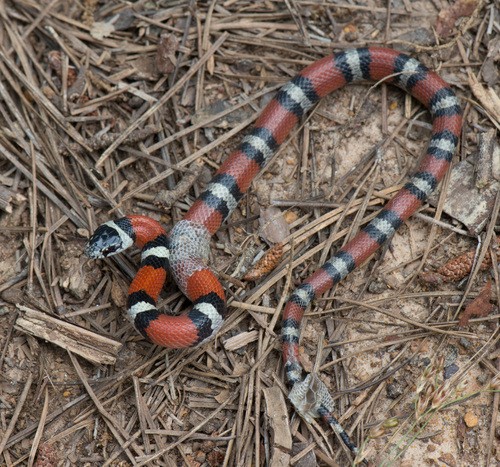Western milksnake
A species of Kingsnakes Scientific name : Lampropeltis gentilis Genus : Kingsnakes
Western milksnake, A species of Kingsnakes
Scientific name: Lampropeltis gentilis
Genus: Kingsnakes
Content
Description General Info
Description
A spectacular snake native to the American Midwest, the western milksnake can be found in a variety of habitats, from open savannah to dry forest edges. They sometimes occupy farmlands and suburban yards, where they provide humans a service by eating mice, rats, and other pests. They have a showy threat display to go with their dramatic coloring, but are harmless to humans.
General Info
Lifespan
15-20 years
Diet
Western milksnake predominantly consumes rodents, demonstrating a preference for small mammals like mice and voles. This voracious predator might also include other smaller reptiles and amphibians in its diet when available.
Appearance
Western milksnake is a medium-sized snake with smooth, glossy scales. It exhibits a variety of colors, commonly tan, brown or grey, with darker, irregular blotches extending down its length. Juveniles may be more brightly colored than adults, but overall, there is no extreme variation between genders or ages. Western milksnake has a slender body and a long, tapering tail, and it's known for its round head with small, piercing eyes.
Behavior
Western milksnake is predominantly nocturnal, spending daytime hours secreted beneath rocks or inside burrows. Notable for its solitary nature, it only seeks company during the breeding season. Predominantly terrestrial, western milksnake is a skillful constrictor, subduing small mammals for food. It possesses a varied diet, making it highly adaptive to different environments. Western milksnake uses scent marking for territory delineation and is known for its defensive display: coiling its body and shaking its tail.
Population
Stable
Scientific Classification
Phylum
Chordates Class
Reptiles Order
Lizards and snakes Family
Colubrids Genus
Kingsnakes Species
Western milksnake 